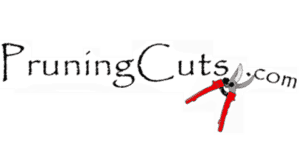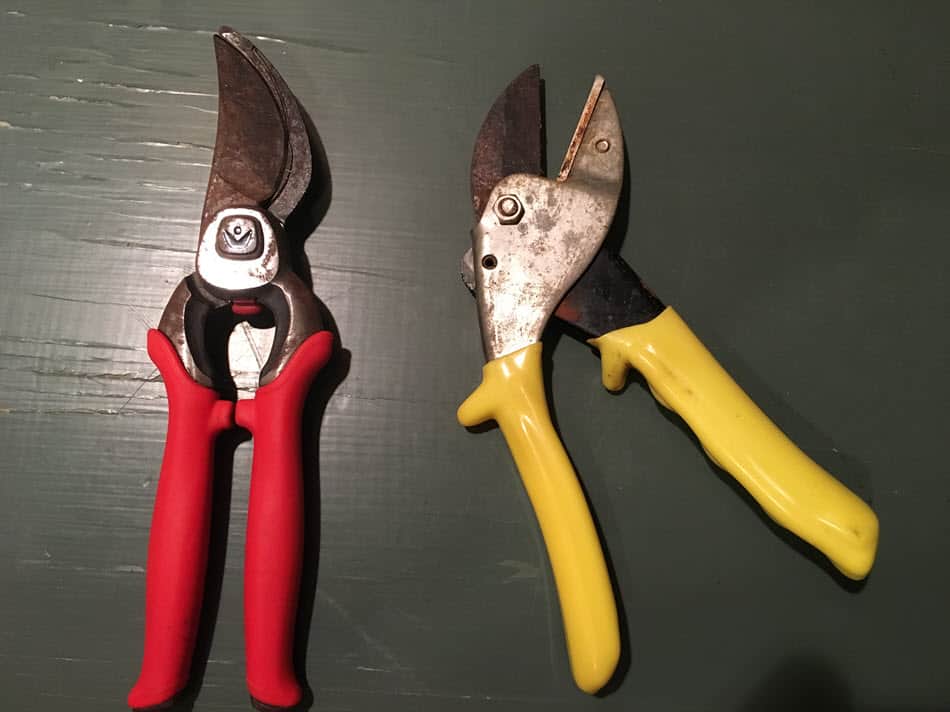
I spent the last 45 years just using bypass hand pruners or secateurs and never paid attention to the anvil type of pruner. But now I’m curious as to what the difference really is. Here is what I discovered. . .
What’s the difference between the bypass and anvil pruners? Bypass pruners (secateurs) are like scissors where the top blade or big blade passes by the lower smaller blade, whereas; the anvil pruners have one blade that smashes into the anvil (bottom flat piece) to cut. Think of a knife and cutting board or flat surface.
So which one should you purchase or have in your arsenal of gardening tools? This is going to depend on what you are pruning. For my money I would definitely purchase the bypass pruners and here’s why.
What’s the Difference Between Pruners and Secateurs?
There is no difference between pruners and secateurs, that term is used for the same tool. Depending on where you live, you will use one or the other term to identify the hand tool.
So you don’t get confused, the term “Pruner” is commonly used in America, Canada, Philippines, and some other countries. Places where there might be more of an American English influence.
The term “Secateur” is sometimes used in American ( I have never heard that term, but I’m in the mid-west. It is sometimes called secateurs on the coastal states.) Around the world, more people use the term “Secateur”.
I am going to use the word “pruner” since that is what I grew up hearing.
What Are Pruners?
Pruners are a gardening tool that can be used with just one hand. It has a sharp cutting blade and a spring that will open it back up after you make your cut.
Some people might call them clippers or pruning shears as well.
What is a Pruner Used For?
Pruners are used for cutting flowers, stems, limbs, even small branches. They can be used for soft tissue plants like vegetables and flowers up to woody shrub stems and branches to smaller tree limbs.
Depending on your grip strength and technique, you can cut material from very small to 3/4 inch woody branches. You will be limited by the jaw opening of the blade. Most people can cut woody limbs up to 1/2 inch easily.
What are Bypass Pruners (Secateurs)?
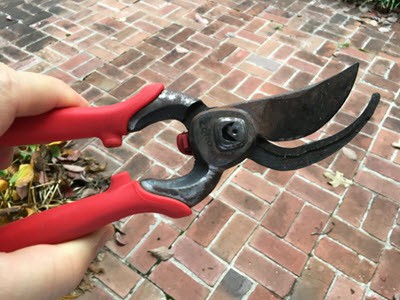
Bypass pruners are very similar to scissors in that you have a blade that passes by another blade to make the cut.
What is a bypass pruner used for?
Bypass pruners are best at cutting or pruning “live” material from soft tissue plants like vegetables, fruits, flowers, to woody shrub branches and stem, to tree limbs where you want to make nice clean cuts.
Since the action is a bypass motion you will not smash the wood or tissue that you are leaving on the plant. This enables the plant to recover faster from the trim and does not damage side of the cut that is left on the shrub, flower, or tree.
The design enables you to get very close to the part that will be left such as the trunk of a small tree, to the buds of a stem, to the fork in a branch.
You can sharpen the cutting blade as it dulls over time which is highly recommended to give you the cleanest cuts that will heal over faster and put less stress on the plant.
You can also use them for “dead” material like small branches and stems. Sometimes they might get a piece of dead material stuck between the blades which can damage your pruners by bending the blade.
In my experience, this rarely happens but I have had it happen on numerous occasions over the years. If you use high-quality equipment it usually doesn’t nick, bend or break your blades.
Pro Tip: If you are cutting bigger stems or branches push the material away from your cutting blade so it doesn’t pinch the blade and make it harder to cut through.
What are Anvil Pruners (Secateurs)?
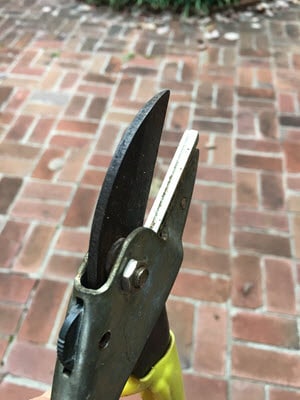
Anvil pruners are pruners that have 1 side with a blade and the other side has an anvil (flat bottom) jaw that has a groove in it. The blade then makes a smash cut with the stem against the anvil jaw or side.
The blade and anvil create a cutting board type situation. Think about cutting something on a cutting board with a knife.
What is an anvil pruner used for?
The primary use is to cut dead wood. You can use it for live wood but it has a tendency of smashing or damaging the part that is left on the plant.
My experience with soft tissue material hasn’t been good with anvil type pruners. If the tissue is stringy you have to repeatedly cut at it.
If you have a lot of dead stems and limbs then it will be worth investing in a good pair of anvil pruners.
Pruner Sizes
Pruners can come in many different shapes and sizes. Some have longer handles.
The jaw opening will range greatly depending on the pruner style and manufacturer. The bigger the opening the larger the diameter you can cut. Normally this is stated on the label or tag of the pruner at the store or in the online description.
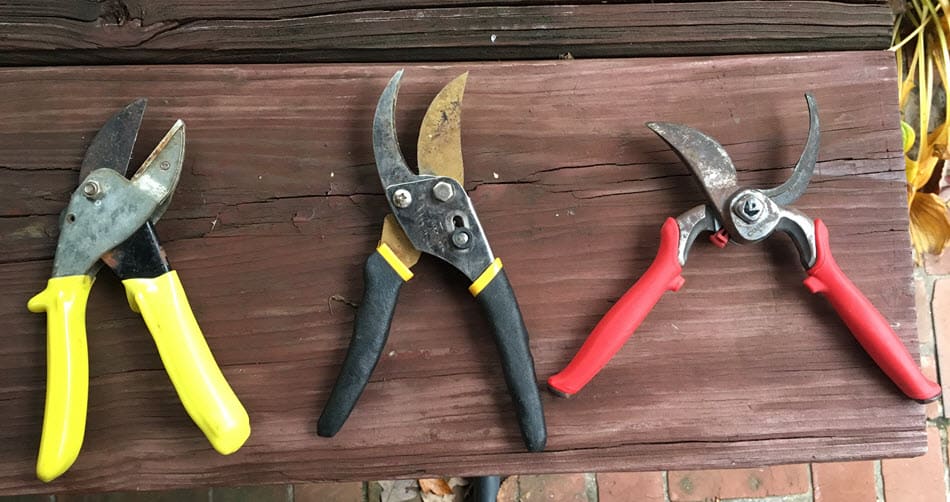
As you can see in this image there is a big difference in the opening size.
What is a Ratchet Pruner?
Ratchet pruners can be either bypass or anvil style of pruner.
The ratchet part is a mechanical piece or pieces that will assist in cutting harder or bigger diameter limbs. Some will have a cam system while others will use some extra lever pieces and others will use a mechanical ratching system.
Benefit is that you can cut wood that is a bit thicker with the assistance. It can also help a person with a weaker grip or that has arthritis with normal pruning tasks.
A disadvantage to this type of pruner is that they tend to be heavier so if you are going to be using them for a long period of time it can wear you out. They tend to be more expensive.
With the extra pieces they can also be harder to get into tight spaces within the plants to make good cuts.
If you a person that needs the extra mechanical assistance with cutting I would recommend purchasing the bypass style of ratchet pruners. Or if you are mostly cutting bigger diameter woody material it makes it much easier so that you will be able to cut longer.
Which Would You Purchase First: Bypass or Anvil?
I would definitely purchase the bypass style of pruner because most of the pruning you do in your landscape and gardens are with “live” plant materials.
When you do encounter some dead stems and branches go ahead and make the cut. You are usually going to be making the cut just outside of the dead part and into the live part of the stem or branch.
Most bypass pruners can handle dead material. If you are just cutting up dead limbs to fit into a bag just break the limb up by bending the dead branch with your hands or over your knee instead of cutting it at all.
Related Questions
What are pole pruners? Pole pruners are very similar to hand pruners except they are on a pole or stick so that you can reach higher limbs. They are typically a bypass blade. They will range from 6 – 12 feet up to commercial grade poles that can 40 feet for those really high limbs.
What are loppers used for? Loppers are used for bigger diameter woody limbs. While you can use loppers to prune small diameter limbs, they really start to shine when you are cutting limbs from 1/2 inch to 2 inches in diameter.
Which is better anvil or bypass loppers? It will depend on what type of wood you are cutting, live or dead. If you are primarily cutting live wood you will want to use bypass loppers. If you are primarily cutting dead wood then you will want to use anvil loppers.
My Pruner Recommendations:
Best Bypass Pruner (for serious gardeners) Felco Pruning Shears (F7)
Best Bypass Pruner for the occasional gardener Garden V Pro Titanium Shears
For Smaller Hands – Best Bypass Pruner Felco F2
